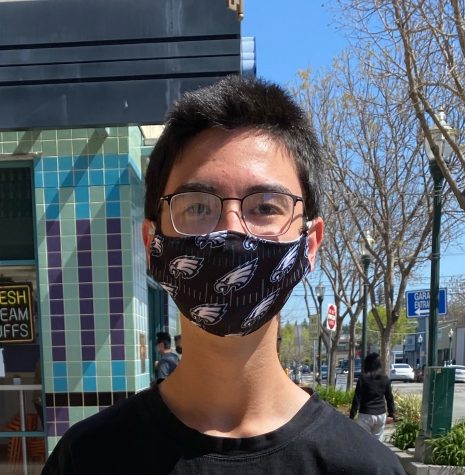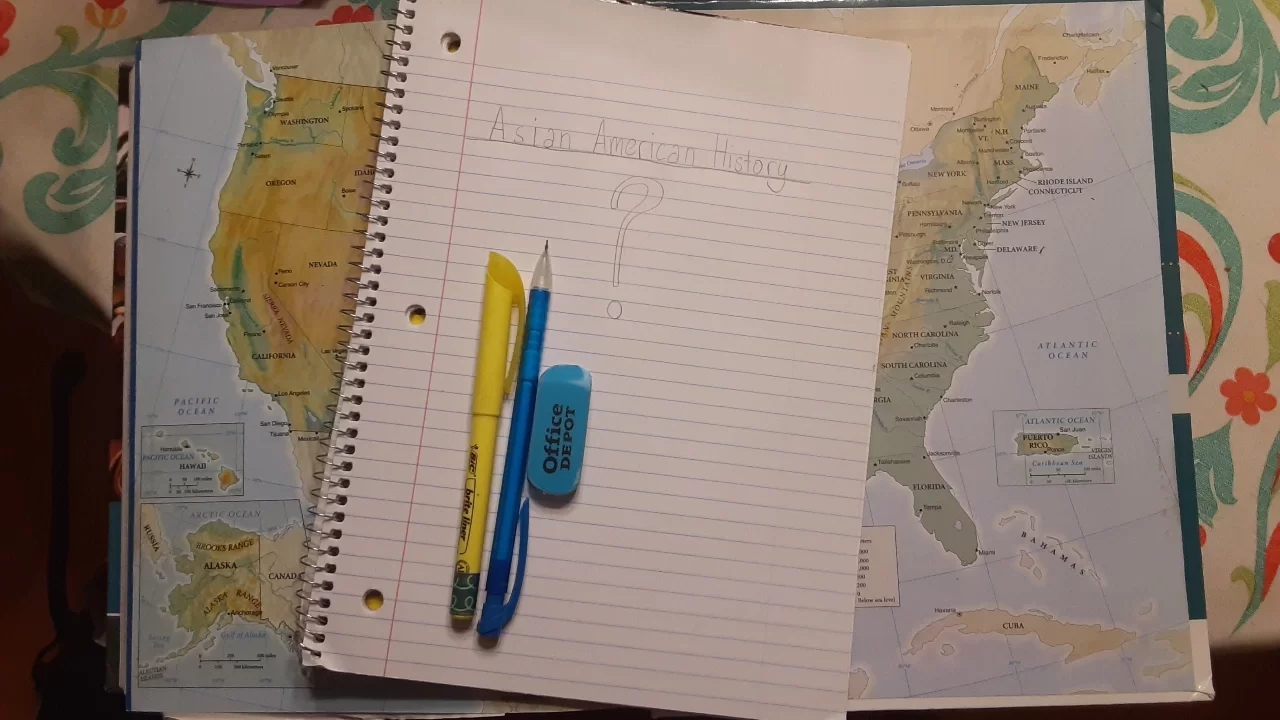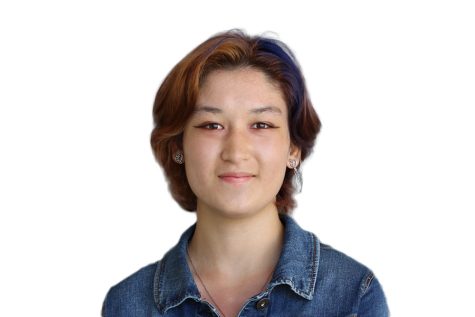Although one-seventh of California’s population is Asian American, their history is not covered in high school curriculum. Despite the efforts to include ethnic studies requirements in high school education, the overall presence of Asian American content in education is underwhelming. With the rise of the Asian American movement, it is a shock to see that the topic is barely touched upon, if at all, in high school American history courses.
Asian American content has long been neglected in high school history courses. Rather than focusing on the stories of marginalized groups, textbooks tend to favor the white American side of history. According to data from the 2020 census, around 14.3 percent of California’s population identifies as Asian American, yet they are underrepresented in history courses and barely glanced at in textbooks.
For a while, the Asian American population was small because of various immigration laws ranging from the Chinese Exclusion Act to the Immigration Act of 1917. This made it a lot easier to exclude Asian American history from education and allowed for a lot of ignorance towards the community to seep through the gaps in education. However, the population of Asian Americans has grown significantly since the early 20th century, and it does not make sense to exclude the history of a major community from high school education.
There are quite a few organizations that aim to promote the implementation of Asian American content in education. The Asian Pacific American Leadership Institute Youth Leadership Academy (APALI YLA) is one of them.
Dr. Michael Chang, a professor of ethnic studies at De Anza College, first Asian American former mayor of Cupertino, and former Santa Clara county education board member, founded the organization. APALI YLA is a summer course that teaches students about Asian American history, politics, and social issues, while also encouraging them to be more civically engaged and to be activists in their community. The program acts as a mentorship-based class, where students are split into groups and assigned a mentor so they can complete a themed cumulative project by the end of the summer.
Anusikha Halder is a student at UC Santa Barbara and a member of APALI YLA’s alumni network. She was a mentor in the program in the 2021 course, as well as a former student. “When I joined [APALI YLA], it was a time in my life where I thought I had to pick different parts of my identity. APALI taught me as a student that if I learned history, if I learned about my culture, if I learned about my identity, then I didn’t have to pick and choose. Learning that I could be more than one thing was really empowering. And then, as a mentor intern, through teaching the students, I’ve actually learned how empowering it was to empower other people, and I was still learning history that I hadn’t known,” Halder said.
Christine Chai, an English professor at De Anza College, also has experience with APALI YLA. She was an instructor for the course from 2005 to 2019 and has worked closely with Chang and other department leaders at De Anza College.
“I helped out with the mentors, like hiring the mentors, training them, and then working very closely with them since I was an instructor. It was really rewarding because, during the year, I don’t teach that many multicultural studies courses, and so I got the opportunity to work with Asian American youth. It’s fun because not only do you build a community; there’s also a lot of camaraderies. It’s easy for a professor to feel like they’re making a change by teaching this kind of subject matter to their students. The students are so impressive, and I was always really humbled by them,” Chai said.
The goals of this program reflect the idea that it is vital to learn about Asian American history. The program does this with various assigned readings and a cumulative project due at the end of the course. The project required students to develop a curriculum relating to an Asian American social issue based on what they learned through the course and outside materials. Both Chai and Halder noticed that students went into the class with little knowledge about Asian American history.
“Even as the high schoolers in the course were learning to put a curriculum together [for the project], which was teaching Asian American history, so much of the feedback I got was ‘we didn’t learn any of this; we don’t know how to put any of this together, we didn’t have exposure to a curriculum like this.’ We were having to teach this for the first time,” Halder said. “We realized that what we needed was a very basic intro because, unfortunately, a lot of people at the high school level don’t get a lot of Asian American history, and they also don’t get taught identity-specific history in general. A lot of it is commodified and made digestible for American history [courses], but all of the things that would be specific to them were left out.”
Organizations like APALI YLA are crucial to promoting multicultural studies and Asian American content. The presence of programs like APALI YLA is beneficial to students, who often have to seek out information about Asian American history because it is not provided to them.
The act of diversifying education is essential, especially with the rise of the Asian American movement in recent years. There are organizations outside of APALI YLA and ethnic studies-oriented programs that advocate for multicultural content in schools. One of these organizations is Diversify Our Narrative. Recently, Diversify Our Narrative helped enact an ethnic studies requirement law in California. This is a significant step in the right direction for the Asian American movement and other cultural movements throughout California.
It is necessary to have diverse education, to prevent prejudice, and to generally educate the world. The existence of organizations like APALI YLA and Diversify Our Narrative help with this diversity promotion.
With this added requirement of ethnic studies courses in high schools, schools are changing their curriculum and course offerings to allow for these classes. The question is whether or not the curriculum for these classes will be up to par with college ethnic studies courses and if they will be inclusive enough.
“The one thing I’m concerned about is who will teach this curriculum? I don’t know that we have enough qualified instructors to teach these courses. I think for those who are working on it, it’s creating a really thoughtful curriculum. You know, Mr. let’s just say Jones, who’s this cisgender male, heterosexual, older man. Is he able to really thoughtfully teach this material and this content? I find that looking to be very challenging. I do think it’s important, I think it’s a step in the right direction, but the next question is how are we implementing this?” Chai said. Although Chai does not teach ethnic studies courses, she believes that these new classes will broaden student horizons and expose them to more content related to marginalized communities.
Carlmont is opening up an ethnic studies class with this new requirement. The world studies class is being replaced with ethnic studies, and freshmen will be taking it after life skills. While some think that the whole idea of ethnic studies classes is a good idea, others expressed a few concerns about it. Aran O’Sullivan, a junior, has expressed some concerns about this.
“I think [the requirement is] great, but just making sure that we have the courses available would be important. I think when people think of ethnic studies, a lot of the time, it goes more towards the African American community, or the Latinx community, and others like that. And that is great, but we also need to make sure that we include Asian representation as well. I think that right now, there’s a severe lack of Asian or Asian American history courses. I think making something like an AP Asian studies course, or something like that, would be something that students are incentivized to take,” O’Sullivan said.
With the question of inclusivity, however, comes the question of grouping. The AAPI community is typically labeled as “Asian” or “Asian American,” despite Asia being one of the most diverse continents. This community comprises many different cultures, each with distinct features, but are constantly represented by people from the same three east Asian countries.
“People group all of the Asians together, and they think ‘we’ve met our quota for including Asians,’ just because they mentioned us all as one group. They don’t care to go in-depth at all, and it leads to an overgeneralization most of the time,” O’Sullivan said.
This grouping is harmful in a few ways. First, it ignores the differences between each culture, clumping everyone together despite the cultural differences. Second, it leads to ignorance about the AAPI community, causing people to think of this community as homogenous and Asia as a monolith continent.
However, there is a positive side to grouping. Chai explained that Asian Americans had to group to advocate for themselves when their movement was just beginning and that this solidarity still holds for most of the community. Gaining improvements as one community may not address the individual needs of each culture, but it creates more of an impact if multiple cultures band together to advocate for themselves.
With this strong front that the community holds comes more chances for advocacy and change. Especially in education, the community is constantly striving to improve conditions for themselves. As a result, teachers and students alike think that Asian American content should be more present in history courses.
“I think we could be learning a lot more about [Asian history]. Right now, I feel like that’s the topic I know the least about because we focus a lot on European history and American history. Our learning of Asian history is primarily limited to just a paragraph or two in some of the chapters. It makes it seem like we were part of the overall story but not an integral part, which is not true,” O’Sullivan said.
The absence of Asian American content is felt by many, some students seeking outside sources of information because they want to fill that space. The textbooks provided by history courses don’t cover enough specific Asian American content, mainly limiting the events to mainstream history that tends to repeat with each class.
David Gomez, who teaches United States history courses at Carlmont, has explained that teachers need to take extra steps to include cultural diversity in their lessons.
“I sat down, and I made a list of some things that I thought related to Asian Americans in US history. I came up with a list of about ten things, and some of the things are interrelated. I was thinking that this isn’t that much. I thought that there were more topics,” Gomez said.
The curricula of most history classes focus on the same few topics, occasionally including more minor events but teaching mainly the same things from year to year. Gomez thinks that teachers need to be more inclusive of different cultures since the history textbooks only cover a little bit of the less mainstream topics.

It makes it seem like we were part of the overall story but not an integral part, which is not true.
— Aran O'Sullivan
“The history textbooks tend to focus on mainstream American history. Sometimes they’ll throw in things about what I call the top three marginalized groups, which are African Americans, Native Americans, and women. They tend to focus on those three, and then sometimes, very rarely, they bring in other groups, and they’ll spend a little bit of time on it, but by comparison, it is not that much. I’m going to have to make more of an effort to seek out people in terms of events that are not in the book,” Gomez said.
With this lack of Asian American content, some students have sought out additional resources, like college ethnic studies courses.
“The first time as [an APALI YLA] student, I was realizing in college that I didn’t have a lot of access to Asian American history classes. It was provided, but some colleges don’t do that. I was lucky enough to go to one that had it, but I couldn’t access it. I thought [APALI YLA] would be an easy way to learn about history, it was a class requirement, and I could learn a little bit more about things that I hadn’t learned in high school,” Halder said.
It is essential to expose people to different cultures and their histories. Without learning about history, mistakes are bound to be made again and again. While it is important to consider the necessity of mainstream history, there needs to be access to education on the less mainstream events.
Students will generally recognize Asian American figures like Kamala Harris, Bruce Lee, Jimmy Choo, Vera Wang, or Chloe Kim. But few will recognize names like Vincent Chin, Jane Kim, Ellison Onizuka, or Goodwin Liu.
There is one main difference between these lists. The first one consists of people who made mainstream historical impacts. The second is a list of people who impacted a smaller community rather than the larger timeline of the United States. Students are less likely to know of the more minor leaders and historical figures because textbook creators will deem them unimportant in the timelines of American history.
One way that students seek Asian American education is through community college courses. In some of her APALI YLA and her English courses, Chai noticed that students enter with a significant lack of knowledge of Asian American history.
“One of the things that are always sort of jarring is the lack of knowledge. Most of my students will still come in and say they’ve never learned about Asian American studies, other than the few pages or paragraphs about the transcontinental railroad and Chinese immigration history, maybe something about Japanese internment camps. But what I have always been impressed by is how hungry students are for that information and just how meaningful that history is to them. This year has been different because of the awareness about anti-Asian sentiment and hate crimes. Students were learning more about history. When students make connections between past events and the present, there is this move towards getting more involved and learning even more,” Chai said.
She felt that students gained a lot from learning about different cultures, including their own, but she also thought that this information was not available to them in high school. She also noted that it varied from school to school; students from Cupertino were usually well-informed, but some from schools in other cities were less informed. She believed that some of this information came not from high school history courses but social media or other places on the Internet.
“There’s so much information that can be found, or it can be lost or misinterpreted. You have to be careful with what’s presented out there,” Chai said.
One of the issues that come with the lack of education about other cultures is that some students will find and accidentally spread misinformation about multicultural history. Especially with the mass use of social media, it is easy to unintentionally spread false information. More than ever, education needs to expand to include the diversity of cultures in America. Schools should be encouraging the spread of knowledge of Asian American history rather than depriving students of valuable learning opportunities regarding cultural studies.
There are quite a few problems with the lack of Asian American content in education. Despite the efforts to expand education to include ethnic studies programs, many worry that this will not be enough to combat the European and white American-based curricula that have dominated history courses for decades. However, in contrast to these worries, people do have hope for the new ethnic studies requirements. They think this is a step in the right direction, and this has a lot of potential to open up new possibilities for education.



